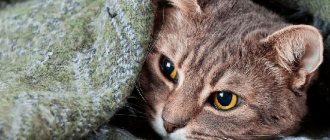Dog walking
According to the new regulations, dog walking is allowed when:
- the dog walks in a specially designated area;
- she is not allowed off leash in public places (children's and sports grounds, driveway areas of hypermarkets and kindergartens, schools, courtyards of residential areas, etc.);
- if she is tied to a leash and has a muzzle on her (this applies to dogs of an aggressive breed (for example, fighting dogs);
- a citizen walking a dog must be sober;
- representatives of heavy breeds of dogs (for example, fighting varieties) are walked by a citizen who is already 14 years old.
In some places not intended for walking dogs, there may be a prohibiting sign or sign. The frequency of walking dogs should be at least twice a day.
Content Rules
There is a set of general rules for keeping pets in an apartment and apartment building, compliance with which is caused by the need to prevent all kinds of accidents and other incidents that are undesirable for society in general and specific people in particular.
- A pet must live on the territory of the person who tamed it and is responsible for it. It is prohibited to let the animal outside the apartment - for example, into the entrance hall, floor hall or premises, loggias and balconies for common use, onto the staircase, into the attic or into the ground floor, basements and underground passages. You cannot deprive an animal of its home and send it to the street - you must hand it over to a shelter. Or, if it is terminally ill, you have the right to go to a veterinary clinic where it will be euthanized.
- It is prohibited to intentionally cause any harm to pets. Even beatings during training are not an exception. The owner of a particular animal undertakes to provide proper care for it. Euthanasia of an animal is prohibited - with the exception, for example, of the last stage of cancer, which is difficult to treat.
- When an animal causes any harm to neighbors or passers-by, its owner will be held accountable. He will compensate for the loss and pay moral damages (by decision of the court or other competent authorities). If the victim is injured, resulting in serious harm, this is no longer administrative, but criminal liability.
- The owner must monitor the behavior of his pet. In particular, he must not use, for example, a fighting dog as a means of threats or blackmail. If the same animal attacks, the owner will be held accountable by law.
- An animal’s behavior is an indicator of its owner’s care for it. Thus, the dog should not move around the territory of a sports or playground without a muzzle, or travel with the owner on public transport.
- A pet should not relieve itself at bus stops, on school premises, in hospitals, etc. If this does happen, the owner must immediately clean up after the pet.
- If signs of aggressive behavior or danger to neighbors and passers-by are detected, the owner is obliged to isolate the animal from other people by contacting a veterinary clinic. In the event of the death of the same animal, the owner must quickly and correctly resolve the issue of its burial, and not use a general garbage dump for this. It is prohibited to bury a dead animal in the ground in the courtyards of residential areas and apartment buildings. There have been cases when animals infected with rabies were burned, but similar types of cases should also be dealt with by the appropriate service.
- It is prohibited to breed dogs and cats of special breeds for meat or fur.
- It is also not permitted to breed or purchase fighting dogs to participate in dog fighting.
- Animals should not be left unattended in a closed room or car for more than an hour.
An apartment (own or temporary) should be used only for human habitation, and not for arranging or maintaining a nursery or holding point, or animal shelter. Otherwise, the owner of the apartment must part with the animals or move out of the given living space. The same requirements apply to communal apartments, dormitories and the private sector. Inappropriate use of any residential space goes against the Housing Code of the Russian Federation and sanitary standards.
In case of malicious, periodic violation of the norms, the owner or guardian of pets is held administratively liable.
Punishment for breaking the rules
The amounts of fines if an administrative case is opened regarding a particular incident are as follows.
- According to the law, the owner of an animal that damages the property of a neighbor or passer-by will pay a fine of 4-5 thousand rubles.
- If a dog is left in an unauthorized place (in particular, in a public place) for a long period of time, the owner faces a fine of 1-2 thousand rubles.
- For cruelty to an animal, if the offender is caught red-handed, the fine can be even more than 300,000 rubles.
In cases where there has been a mass extermination of (several or more) domestic or stray animals, the danger of which to surrounding people has not been proven, the Code of Administrative Offenses of Russia does not apply. Such a technique is considered an excess of self-defense, so a criminal article on acts of cruelty towards animals can be applied. In this case, by a court decision, the violator is sent to free public works and is fined or sentenced to a certain term of imprisonment (suspended or real).
When is it clear that a dog is being abused?
Signs of such an attitude towards one or more dogs may include the following signs.
- The dog is always on a short chain or leash - the owner will not lower the chain or leash so that it can stretch.
- No dog kennel. The animal is open to the vagaries of bad weather and cannot hide from the heat, rain or snowfall. At the same time, the owner does not take any measures to protect the dog from this.
- He deliberately poisons the animal with hunger, thirst, etc. , the dog’s suffering is unjustified.
If neighbors discover such tactics on the part of the owner, a written complaint is filed against him to the prosecutor's office or to the administration at the place of residence, certified by the signatures of persons who witnessed the incident. In this case, the legal adviser helps to draw up this document so that it has legal force. The case is accompanied by photo and video materials filmed by eyewitnesses of what was happening.
Quiet, unwitnessed, nighttime baiting of dogs with special drugs often takes place, causing the painful death of these animals. There are even dog hunters - people who use both drugs and throwing (or pneumatic) weapons against dogs. Their activities go beyond the law.
And yet, it is not a specific local resident or a group of random people who should control the number of stray dogs (and promptly get rid of excess dogs that pose a danger to people), but a special service. It is best to contact the administration of your neighborhood or city with this question. Administration representatives will call a team to the scene of the incident to catch stray dogs and cats in the region.
Whatever the subject of the dispute, the issue can be resolved without contacting any supervisory services . And only if a peaceful solution to the problem does not help, the offender will be called to order by the employees of these services.
In the following video, the lawyer answers all questions regarding the rules for keeping and walking dogs.
Monitor every meeting at the very beginning
Even well-meaning children can accidentally scare a cat, not to mention the fact that children often pull cats by the tail or paws while playing. It is not uncommon for them to restrict cats' movement by putting them under a blanket or placing them in a doll's stroller.
You should always be nearby when your child is playing with the cat. If he acts in a way that could frighten the animal, then you need to immediately stop him and redirect the behavior in the right direction, explaining how the cat should be treated. With each positive result, you should praise and reward both the child and the animal.
Let your cat hide and be alone
A cat is not a toy. Both you and the child should always remember this. If she hid or sat higher, do not disturb her or allow the baby to climb into the same place where the cat is. He shouldn't force her out from under the sofa. This is where she will definitely begin to defend herself and use her teeth and claws.
The animal will go out on its own. To do this, you just need to wait or interest her. Catnip treats and toys are great for this.
There should be several secluded places in the house where the cat can rest without fear of being disturbed. Both adults and children should know that most of the time animals want to be left to their own devices and to be able to choose where to be and what to do.
If there are several small children in the house or one who is very noisy, I advise you to choose some room where they cannot enter without permission. Let this be the cat's home, a place where she is free from children's hands, especially at a time when you cannot control their play.
Draw your child's attention to the cat's body language
If you have a child in the house with a cat, or vice versa, help him learn to recognize when the purr is calm and when it is not. The baby should know that a cat who wants to be petted will rub against his hands or clothes, perhaps bow his head and purr, and his tail will be held high.
Well, if the cat has its ears flattened, waves its tail from side to side, nervously twitches it or fluffs it up, if the tail is pressed to the hind limbs, if the cat growls or extends its claws, the child should immediately let her go and step aside, because these are signs obvious excitement and aggression of the animal.
Teach your child how to hold a cat correctly
Children always want to hold a cat in their arms, because it is so nice. But they have to deal with the fact that the animal is afraid and tries to escape. Even those cats that happily sit in the arms of adults can show irritation and fear when they find themselves in the arms of a child.
The thing is that having very little strength to lift the animal, as well as a small ratio between their own weight and the weight of the cat, poorly coordinating movements and moving faster and less predictably than adults, children create severe discomfort for the cat.
Busy with holding her in their arms, they miss the animal's signals, which clearly indicate that the cat should be released long ago. Having decided that it is in danger, the cat may begin to resist, scratch and bite. As a result, the child may become very frightened or even seriously injured.
Together on the couch
There is a simple way to give your child the opportunity to have close and safe contact with a cat. To do this, he should calmly sit on the sofa or on the floor next to the cat and invite her to his lap. You shouldn’t force her, it’s better to seduce her with a treat or toy.
A calm cat will simply enjoy the warmth of a child's body and will happily settle into your lap. Always be there. The child should know that as soon as the cat wants to leave, it must be released.
For older children who are physically strong and calm enough to hold a cat, teach them how to do it correctly. The cat's weight should be evenly distributed between the two arms. You should hold it gently in front of you, with one hand under your chest and the other supporting your hind legs. This method is quite safe.
Release carefully
In order to let go of the cat, the child should sit down and place it on the floor or other stable surface. You should not allow the cat to jump, otherwise it may unwittingly injure the child. I repeat that the cat’s ears and tail will tell you that she has already had enough of being held in her arms and wants to leave.
Calmness and tenderness during the game
Cats are sensitive to movement and noise. Natural children's games with cheerful screaming, jumping and running can greatly frighten her. This means that the cat should not be in the same room as the child during such play.
Hands are not a toy!
If they play together, teach your child not to use his own hands as a toy. When playing, a cat hunts and, accordingly, uses its teeth and claws. This natural behavior for her will certainly lead to negative consequences: the cat will get used to aggressive play and can scare the child or cause him pain.











